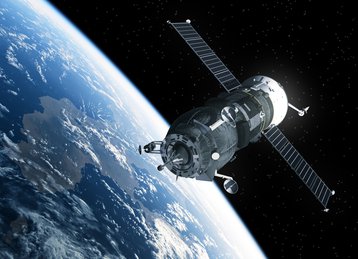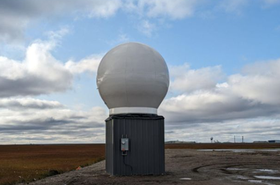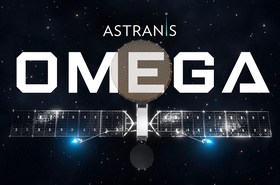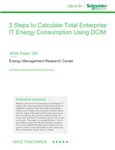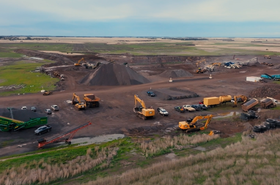The World Economic Forum’s IoT Guidelines for Sustainability report reveals that 84 percent of Internet of Things (IoT) deployments either directly address or have the potential to contribute to the UN's Sustainable Development Goals. The remarkable capability of satellite IoT to gather and transmit data, even in remote locations, holds significant promise for reshaping global sustainability initiatives.
By facilitating intelligent communication between devices and leveraging real-time data, satellite IoT’s role in tackling environmental issues and developing sustainable practices, should not be underestimated.
Exploring the Practical Intersection of Satellite IoT and Sustainability
One notable area where satellite IoT is driving sustainability is in wildlife conservation and environmental monitoring. This approach presents an efficient and impactful means of collecting and transmitting essential data. A common strategy involves using a form of LPWAN to network multiple sensors across expansive areas. The collected data is centralized in a gateway, optimized for satellite transmission. LoRaWAN, often paired with satellite technology, is gaining prominence due to its ability to establish a fully wireless communication network without relying on cellular infrastructure.
An outstanding feature of LoRaWAN is its capacity to cover vast areas with minimal infrastructure requirements. In contrast to traditional cellular networks, which often struggle to provide coverage in remote and challenging terrains like dense forests, mountains, or deserts—habitats crucial for numerous endangered species—LoRaWAN excels. It can connect hundreds of nodes up to 10 kilometers apart, with just a single base station or gateway, connected to satellites for data backhaul. This valuable data serves as a crucial resource for environmental agencies and policymakers.
Alternatively, sensors can be directly paired with a satellite transceiver to ensure data transmission in real time. One such example of using satellite IoT data to empower environmental conservation efforts can be seen in the “digitalization of forest" where this technology is being integrated in forest environments. The aim of this initiative is to improve existing methods of monitoring, data acquisition, and research and development.
In this case, satellite-enabled sensors can be deployed in forests to detect signs of deforestation, monitor wildlife movement, and measure carbon dioxide levels. This data helps in making informed decisions for conservation efforts, preventing illegal activities, and preserving ecosystems. These sophisticated systems are designed for intelligent sensing, monitoring, and analysis, specifically targeting applications like forest fire detection, illegal logging, and poaching.
Similarly, satellite IoT connectivity is helping smart agriculture and precision farming, optimizing resource usage, and reducing environmental impact. Farmers now harness IoT sensors to oversee environmental factors, manage livestock, and enhance decision-making across all facets of agriculture, transforming it into a "smart" endeavor. Given the expansive nature of farm operations, LoRaWAN paired with a satellite-enabled gateway emerges as an ideal technology to aid efficient IoT solutions within the agricultural sector. Effectively networked IoT sensors can monitor soil moisture levels, assess crop health, and provide farmers with actionable insights even if the farm is in an extremely remote location.
Satellite IoT, therefore, is crucial in areas lacking traditional, cellular connectivity. For example, Synnefa, which facilitates remote farming for smallholders in rural Kenya, provides cost-effective, reliable, and efficient data for farmers to make educated decisions about when to irrigate or fertilize their crops; or to use Synnefa’s smart greenhouses and drip kits which will automatically fulfill these tasks based on sensor data.
The gains are spectacular: Farmers are saving water by over 50 percent, reducing fertilizer application rates by 41 percent, and increasing production by 30 percent when compared to yields prior to the use of their smart sensors.
Moreover, precision agriculture, a farming management strategy based on observing, measuring, and responding to temporal and spatial variability to improve agricultural production sustainability, holds the potential to significantly reduce the environmental impact of the agricultural industry, currently responsible for a quarter of global greenhouse gas emissions. Adopting precision agriculture technologies can increase crop production, reduce resource usage, and have positive economic impacts. The Association of Equipment Manufacturers estimates current precision agriculture usage at 10-60 percent, predicting that a 90 percent adoption rate could lead to substantial benefits. However, slow adoption is attributed to challenges, with connectivity being a prominent issue, especially in remote farm areas.
The complex challenge of climate change
Satellite IoT contributes to climate change mitigation by providing invaluable data for monitoring and understanding environmental changes. Remote sensors deliver accurate real-time data to help us understand how we affect the environment. These sensors can track changes in sea levels, measure atmospheric carbon concentrations, and monitor deforestation patterns, and their data can be securely, reliably, and cost-effectively delivered over satellite. This data is crucial for climate scientists and policymakers in formulating evidence-based strategies to mitigate the impacts of climate change and adapt to evolving environmental conditions.
With climate change comes potential disasters and extreme weather. Satellite IoT supports disaster management, enhancing early warning systems and boosting response capabilities. Satellite-enabled sensors can monitor various natural disasters such as hurricanes, floods, and wildfires, supplying real-time data to emergency responders. This enables prompt evacuation, optimal resource allocation, and efficient post-disaster recovery efforts, helping to reduce the environmental and human impact of such events. Satellite-empowered technology means that disaster management crews can comprehend their available resources, allowing them to coordinate actions effectively. Asset trackers fixed to vehicles and equipment can provide precise GPS coordinates at varying frequencies, depending on the disaster's scale, offering a tailored level of insight for swift and efficient relief efforts.
While satellite IoT indeed offers numerous prospects for environmental sustainability, addressing challenges such as data security and high implementation costs is crucial. The future trajectory of satellite technology, marked by the deployment of smaller, cost-effective satellites and advancements in machine learning for data analysis, holds the potential to overcome these challenges and further amplify the positive impact of Satellite IoT on environmental sustainability.
As technology continues its evolution, Satellite IoT is positioned to play an increasingly pivotal role in creating a balanced relationship between human activities and the environment. By harnessing the capabilities of Satellite IoT, we can actively contribute to building a more sustainable future.


